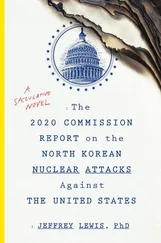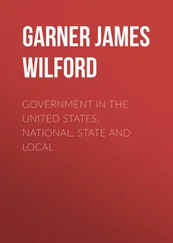Here was how the New York Times summed up what reduction actually meant for our ultimate supersized institution in tough times: “Current budget plans project growth of only 1 percent in the Pentagon budget, after inflation, over the next five years.” Only 1 percent growth—at a time when state budgets, for instance, are being slashed to the bone. Like the Soviet military, the Pentagon is planning to remain obese whatever else goes down.
Meanwhile, the “antiwar” president has been overseeing the expansion of the new normal on many fronts, including the expanding size of the army itself. In fact, when it comes to the Global War on Terror—even with the name now in disuse—the profligacy can still take your breath away.
Consider, for instance, the $2.2 billion Host Nation Trucking contract the Pentagon uses to pay protection money to Afghan security companies which, in turn, slip some part of those payments to the Taliban to let American supplies travel safely on Afghan roads. Or consider the $683,000 the Pentagon spent, according to the Washington Post , to “renovate a café that sells ice cream and Starbucks coffee” at its base/prison in Guantánamo Bay, Cuba. Or the $773,000 used there “to remodel a cinder-block building to house a KFC/Taco Bell restaurant,” or the $7.3 million spent on baseball and football fields, or the $60,000 batting cage, or a promised $20,000 soccer cage, all part of the approximately $2 billion that have gone into the American base and prison complex that Barack Obama promised to close but hasn’t.
Or what about the U.S. Embassy in Baghdad, that 104-acre, almost three-quarters-of-a-billion-dollar, twenty-one-building homage to the American-mall-as-fortified-citadel? It costs more than $1.5 billion a year to run, and bears about as much relationship to an “embassy” as McDonald’s does to a neighborhood hamburger joint. According to a recent audit, millions of dollars in “federal property” assigned to what is essentially a vast command center for the region, including 159 of the embassy’s 1,168 vehicles, are missing or unaccounted for.
Or consider a particularly striking example of military expansion under President Obama, superbly reported by the Washington Post ’s Karen DeYoung and Greg Jaffe in a piece headlined, “U.S. ‘Secret War’ Expands Globally as Special Operations Forces Take Larger Role.” As a story, it sank without a trace in a country evidently unfazed by the idea of having its forces garrisoned and potentially readying to fight everywhere on the planet. Here’s how the piece began: “Beneath its commitment to soft- spoken diplomacy and beyond the combat zones of Afghanistan and Iraq, the Obama administration has significantly expanded a largely secret U.S. war against al-Qaeda and other radical groups, according to senior military and administration officials. Special operations forces have grown both in number and budget, and are deployed in seventy-five countries, compared with about sixty at the beginning of last year.”
Now, without opening an atlas, just try to name any seventy-five countries on this planet. And yet U.S. special operatives are now engaging in war, or preparing for war, or training others to do so, or covertly collecting intelligence in that many countries across Asia, Africa, the Middle East, and Latin America.
Whatever it is or isn’t called, this remains Bush’s Global War on Terror on an expansionist trajectory. DeYoung and Jaffe quote an unnamed “senior military official” saying that the Obama administration has allowed “things that the previous administration did not,” and report that special operations commanders are now “a far more regular presence at the White House” than in the Bush years. Not surprisingly, those special operations forces have themselves expanded in the first year and a half of the Obama presidency and, for fiscal year 2011, the administration has requested a 5.7 percent hike in their budget to $6.3 billion.
Once upon a time, special operations forces got their name because they were small and “special.” Now, they are, in essence, being transformed into a covert military within the military and, as befits their growing size, reports Noah Shachtman of Wired’sDanger Room , the Army Special Forces alone are slated to get a new $100 million “headquarters” in northern Afghanistan. It will cover about 17 acres and will include a “communications building, Tactical Operations Center, training facility, medical aid station, Vehicle Maintenance Facility… dining facility, laundry facility, and a kennel to support working dogs…. Supporting facilities include roads, power production system and electrical distribution, water well, non-potable water production, water storage, water distribution, sanitary sewer collection system, communication manhole/duct system, curbs, walkways, drainage and parking.” This headquarters, adds Shachtman, will take a year to build, “at which point, the U.S. is allegedly supposed to begin drawing down its forces in Afghanistan.”
The first year and a half of the Obama administration has seen a continuation of what could be considered the monumental socialist-realist era of American war-making (including a decision to construct another huge, Baghdad-style “embassy” in Islamabad, Pakistan). This sort of creeping gigantism, with all its assorted cost overruns and private perks, would undoubtedly have seemed familiar to the Soviets. Certainly no less familiar will be the near decade the U.S. military has spent in the Afghan graveyard.
Drunk on war as Washington may be, the United States in 2011 is still not the Soviet Union in 1990—not yet. But it’s not the triumphant “sole superpower” anymore, either. Its global power is visibly waning, its ability to win wars distinctly in question, its economic viability open to doubt. Its airports are less shiny and more Third World–like every year. Unlike France or China, it has not a mile of high-speed rail. And when it comes to the future, especially the creation and support of innovative industries in alternative energy, it’s chasing the pack. It is increasingly a low-end service economy, losing good jobs that will never return. And if its armies come home in defeat, watch out.
In 1991, the Soviet Union suddenly evaporated. The Cold War was over. Like many wars, it seemed to have an obvious winner and an obvious loser. Nearly twenty years later, as the United States heads down the Soviet road to disaster—even if the world can’t imagine what a bankrupt America might mean—it’s far clearer that, in the titanic struggle of the two superpowers that we came to call the Cold War, there were actually two losers, and that, when the “second superpower” left the scene, the first was already heading for the exits, just ever so slowly and in a state of self-intoxicated self-congratulation. Nearly every decision in Washington since then, including Barack Obama’s to expand both the Afghan War and the war on terror, has only made what was, in 1991, one possible path seem like fate itself.
Call up the Politburo in Washington. We’re in trouble.
Just as 2010 ended, the U.S. military’s urge to surge resurfaced in a significant way. “Leaders” in the Obama administration and “senior American military commanders” in Afghanistan slipped information to New York Times reporters Mark Mazzetti and Dexter Filkins about secret planning to increase pressure on the Pakistani tribal borderlands via cross-border raids by U.S. Special Operations forces in the new year. In the front-page story those two reporters produced, you could practically slice with a dull knife American military frustration over a war going terribly wrong, over an enemy (shades of Vietnam) with “sanctuaries” for rest, recuperation, and rearming just over an ill-marked, only half-existent border.
Читать дальше












